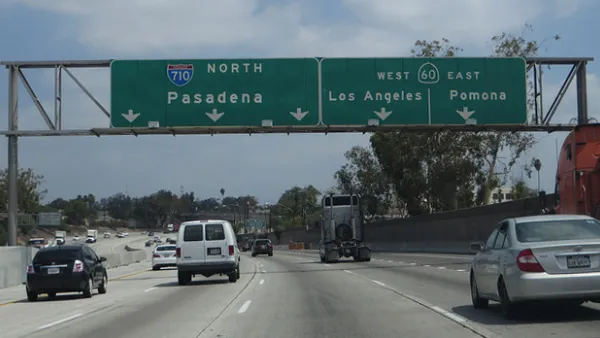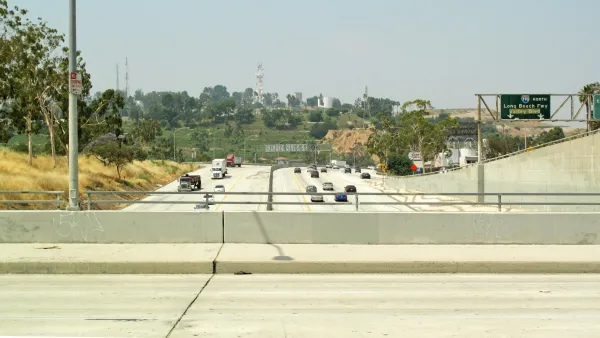The newest plan for the 710 corridor claims it will not displace any residents.

The Los Angeles Metro Board Planning Committee approved a plan to widen the 710 freeway, citing “no known displacements” of residents or businesses.
As Joe Linton explains in Streetsblog LA, a prior plan, which would have widened the freeway significantly and displaced local residents, caused significant concern among environmental justice advocates and community members. That plan was scrapped after it was found in violation of the federal Clean Air Act.
“Though it has many details still to be fleshed out, the resulting CMIP is definitely multimodal. More than a third of the remaining $743M project budget would go to facilities for transit, bicycling, and/or minimizing goods movement emissions.” The new plan adds about four miles of new auxiliary traffic lanes and other improvements that will expand car capacity, Linton notes. “That plan includes a lot of wiggle language, including citing ‘minimal or no displacement’ and ‘no known displacement’ numerous times, plus pledges to ‘avoid significant displacement.’”
FULL STORY: Metro Committee Approves 710 Freeway Plan with Reduced Widening and “No Known Displacements”

National Parks Layoffs Will Cause Communities to Lose Billions
Thousands of essential park workers were laid off this week, just before the busy spring break season.

Retro-silient?: America’s First “Eco-burb,” The Woodlands Turns 50
A master-planned community north of Houston offers lessons on green infrastructure and resilient design, but falls short of its founder’s lofty affordability and walkability goals.

Delivering for America Plan Will Downgrade Mail Service in at Least 49.5 Percent of Zip Codes
Republican and Democrat lawmakers criticize the plan for its disproportionate negative impact on rural communities.

Test News Post 1
This is a summary

Test News Headline 46
Test for the image on the front page.

Balancing Bombs and Butterflies: How the National Guard Protects a Rare Species
The National Guard at Fort Indiantown Gap uses GIS technology and land management strategies to balance military training with conservation efforts, ensuring the survival of the rare eastern regal fritillary butterfly.
Urban Design for Planners 1: Software Tools
This six-course series explores essential urban design concepts using open source software and equips planners with the tools they need to participate fully in the urban design process.
Planning for Universal Design
Learn the tools for implementing Universal Design in planning regulations.
EMC Planning Group, Inc.
Planetizen
Planetizen
Mpact (formerly Rail~Volution)
Great Falls Development Authority, Inc.
HUDs Office of Policy Development and Research
NYU Wagner Graduate School of Public Service




























